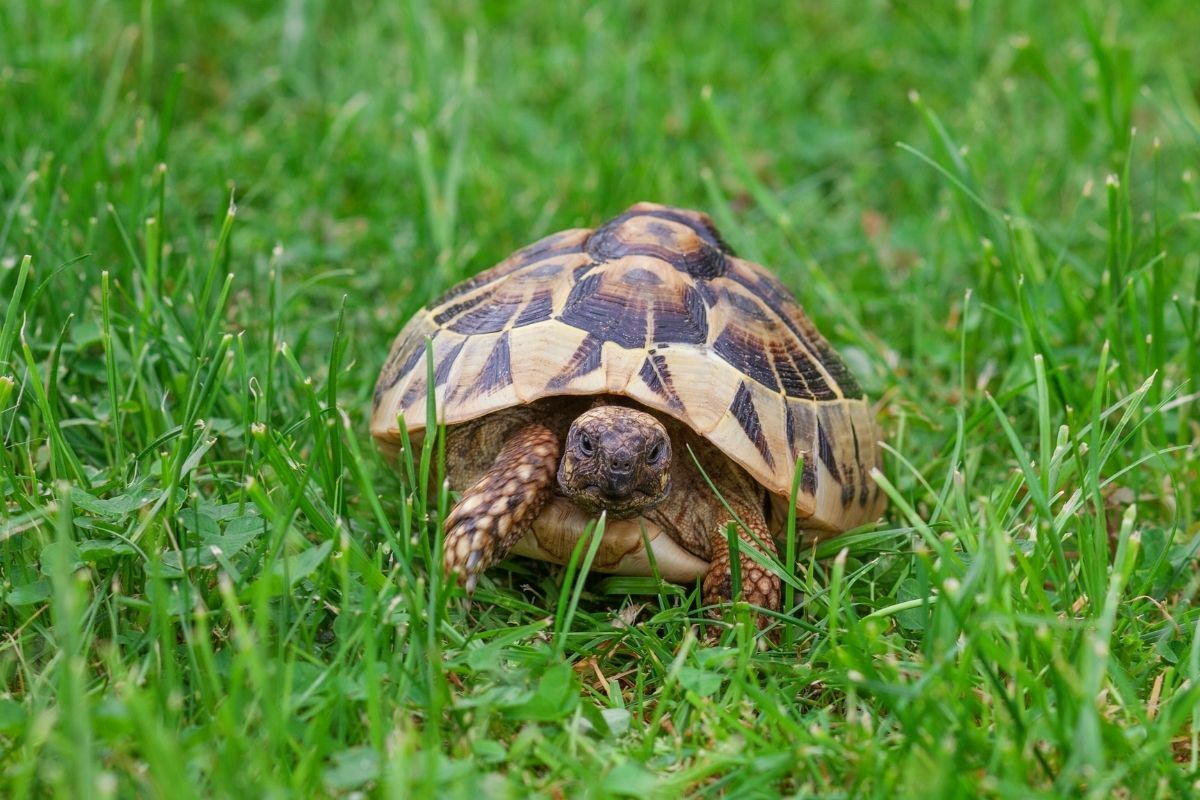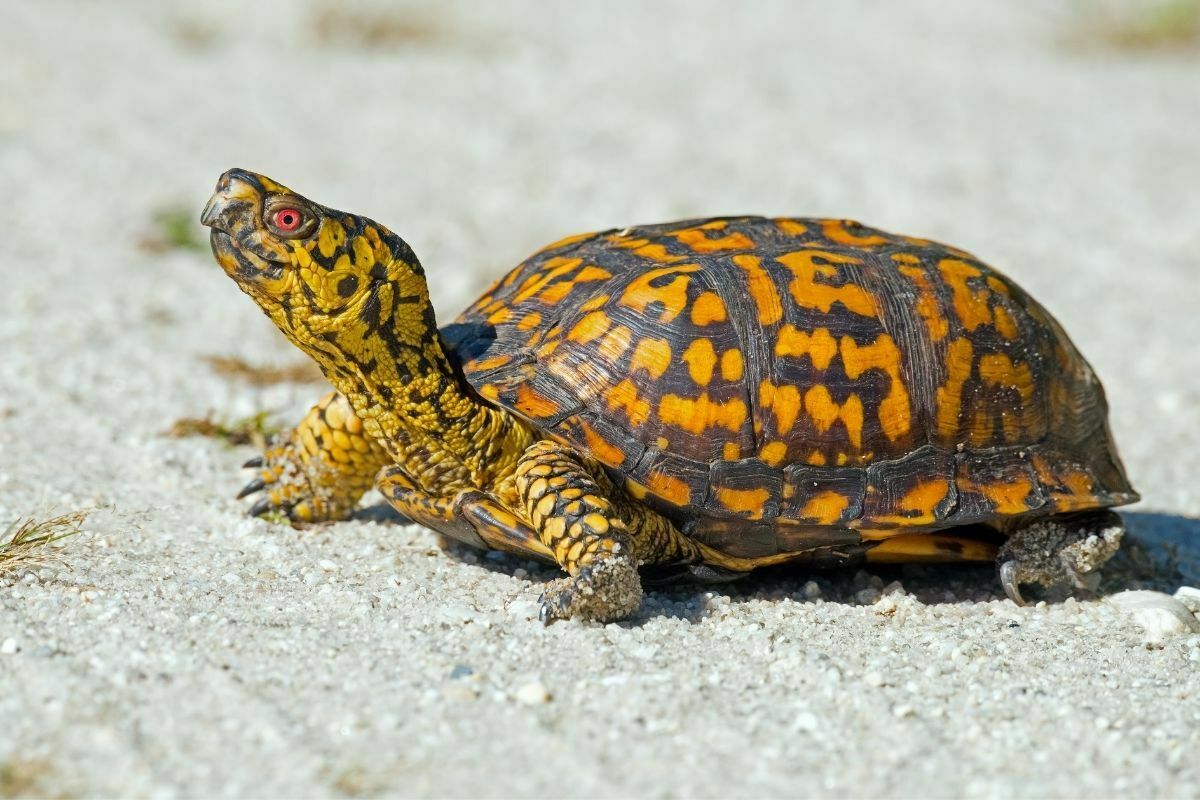Turtles and tortoises are two very similar animals. While turtles and tortoises look alike, they are completely different creatures.
Yet, both turtles and tortoises are considered to be part of the reptile family. It is easy to confuse the two for each other, and you may wonder if a turtle and a tortoise can live together.

In this article, we will be discussing whether turtles and tortoises can live together. While also delving into why they shouldn’t really be put together.
Similarities Between Turtles And Tortoises
Both turtles and tortoises are part of the reptile family. They are also part of the testudines family due to their shell developing from their ribs.
Tortoises are typically found on land in very dry surroundings. Turtles are very large and are found in sea or freshwater environments in the wild.
As turtles and tortoises are both a part of the same family, there are a couple of things they have in common. Below, we have put together the main similarities you will find between turtles and tortoises.
The Anatomy Of Both Animals
It is known that tortoises and turtles are both classed as ectotherms. This means they are cold-blooded animals and rely on the environment that they are in to help regulate their body temperature.
This is why you will see both turtles and tortoises basking in the sunlight to help them to stay warm and keep their temperature up.
Neither of them has teeth. So instead you will notice that their mouths have a sharp edge, which they use to crush, shear, and bite through plants, veg, and fruit.
Alongside this, both of these creatures will lay several eggs in the sand. The females will then cover their eggs with soil or sand to protect them. Then the mothers walk away and leave the eggs. Once the hatchlings are born, they must look after themselves from day one.
Both Have Shells
Both tortoises and turtles have a shell that protects them from predators. Typically, the shell is made of two parts. The upper part of the shell is known as the carapace. Then the underside is known as the plastron. These two parts are joined together at the sides of the shell.
It is also known that the whole shell features tiny bones that are covered by a plate of keratin. This is also known as a scute.
Added Calcium In Their Diet
The diet of a tortoise and turtle can vary depending on the species. However, something they all share in common is their calcium requirements. This is due to both turtles and tortoises needing extra calcium in their diets to keep their bones and shell strong and healthy.
However, tortoises and turtles do need various vitamins and minerals for them to remain healthy. Turtles are known to be omnivores, so they get all their nutrients from the animal meat and plants that they eat. While tortoises live off a herbivore diet.
Aside from their diets, tortoises, and turtles are known to sunbathe in sunlight. This is so they can absorb the UVB rays to create vitamin D. This also helps them regulate their body temperature, as we have already discussed.
Why Can’t Turtles And Tortoises Live Together?

It is easy for people to get confused between turtles and tortoises, as they do look quite similar. We have looked at how they are similar, but there are a lot of differences between them that means they don’t make great living companions for one another.
In the wild, turtles and tortoises keep their distance from one another. They very rarely cross paths with each other. As a result, trying to make a turtle and tortoise live together is seen as unnatural.
As a result, there is the chance that if you put them together in an enclosure, then they may get stressed out or injured. This could then lead to illness as well.
Below, we have put together some main reasons why you shouldn’t let turtles and tortoises live together.
Environmental Requirements
The main reason why you shouldn’t house turtles and tortoises together is that they have different needs when it comes to their habitat.
Turtles love water and need large spaces of water to swim in, while tortoises prefer dry land. Thus, as you can see, both have different environmental needs to keep them happy.
Turtles enjoy a mixture of land for basking and water. However, tortoises don’t like water at all and can easily drown in the shallowest of water depths.
Therefore, you can’t create an environment that will please both a turtle and tortoise without jeopardizing their well-being.
Different Diets
Another factor that can prevent turtles and tortoises from living together is the fact they have very different diets. Turtles are known as omnivores, while tortoises are known as herbivores.
Therefore, turtles will eat a much more varied diet of snails, worms, fruit, grass, flowers, and green vegetables. They are also known to eat decaying fish when they come across it naturally in the wild.
Compared to tortoises where diet is made up mostly of weeds, grass, flowers, stems, fruit, and leaves. Thus, tortoises shouldn’t be given meat to consume. It may be difficult to make sure that both the turtle and tortoise each have their own food.
Illnesses Can Pass To Each Other
It is known that tortoises and turtles have different levels of immunity. This is due to their immunity levels being built up to the bacteria that they come across in their habitat.
As we have already established, tortoises and turtles don’t usually come across each other in the wild. As a result, neither animal has the immunity to be able to fight off the bacteria that the other one may carry.
Hence, if a turtle and tortoise are made to live together, then there is a high chance that both animals could get ill from the bacteria of the other. Infections and illnesses can pass really easily through shared water bowls, feces, or even food.
Aggressive Behavior
It is known that turtles and tortoises can start to show aggressive behavior to one another. This is more likely to happen if both animals are male as well.
This is because males in any species like to assert and show off their dominance over any other males nearby. They will compete for their favorite basking spot, food, and where they want to sleep.
Typically, the weaker and smaller ones will submit. However, if a fight does break out, that could lead to serious injury and even death.
Tortoises are very solitary animals that like to live a quiet life by themselves. Therefore, being paired could cause unwanted stress to the tortoise. Too much stress can cause serious health issues, resulting in death.
Could A Tortoise And A Box Turtle Live Together?

Unfortunately, tortoises and box turtles can live together because they are part of different families. The box turtle is part of the American pond turtle family, while tortoises are part of the reptile family. Hence, they should be housed together.
They both do have similar habit needs, however, there is a high possibility that they will fight with one another. Alongside this, their diets are vastly different.
Box turtles are carnivores for 5 to 6 years of their life and then once they are an adult they will become an herbivore. While tortoises are just herbivores all their lives.
Finally, another reason why you shouldn’t pair a box turtle and tortoise together is that they could share diseases. The biggest risk is protozoa and parasitic worms, which could cause harm to both the box turtle and the tortoise.
Frequently Asked Questions
Why Can’t Tortoises Swim?
The biggest reason is due to their bodies. Turtles have flippers on their legs and a couple of claws. These flippers allow them to swim through water easily.
While a tortoise has bent legs and clawed toes, these aren’t suitable for water. Hence, this stops a tortoise from being able to swim.
Can A Turtle Mate With A Tortoise?
No, a turtle and tortoise cannot mate together, as they’re genetically incompatible. Even if science helped them to mate, the offspring would be prone to a large number of genetic health problems.
Do Tortoises Get Lonely?
Tortoises like being alone, as they aren’t social creatures. As a result, they don’t need companions and won’t get lonely. In the wild, they spend most of their time alone.
Why Are Two Turtles Or Tortoises Biting Each Other?
If you notice two turtles or two tortoises biting one another, this is to show aggression and dominance to the other turtle or tortoise. As territorial creatures, it is best to keep turtles and tortoises alone in their enclosures.
Final Thoughts
It is easy to confuse the turtle and tortoise with each other. However, they may have some similarities. There are a lot of things that set them apart from one another. Their differences are quite huge and are the reasons why a turtle and a tortoise shouldn’t live together.
We hope that you have found this article useful and now understand why turtles and tortoises can’t live together.
